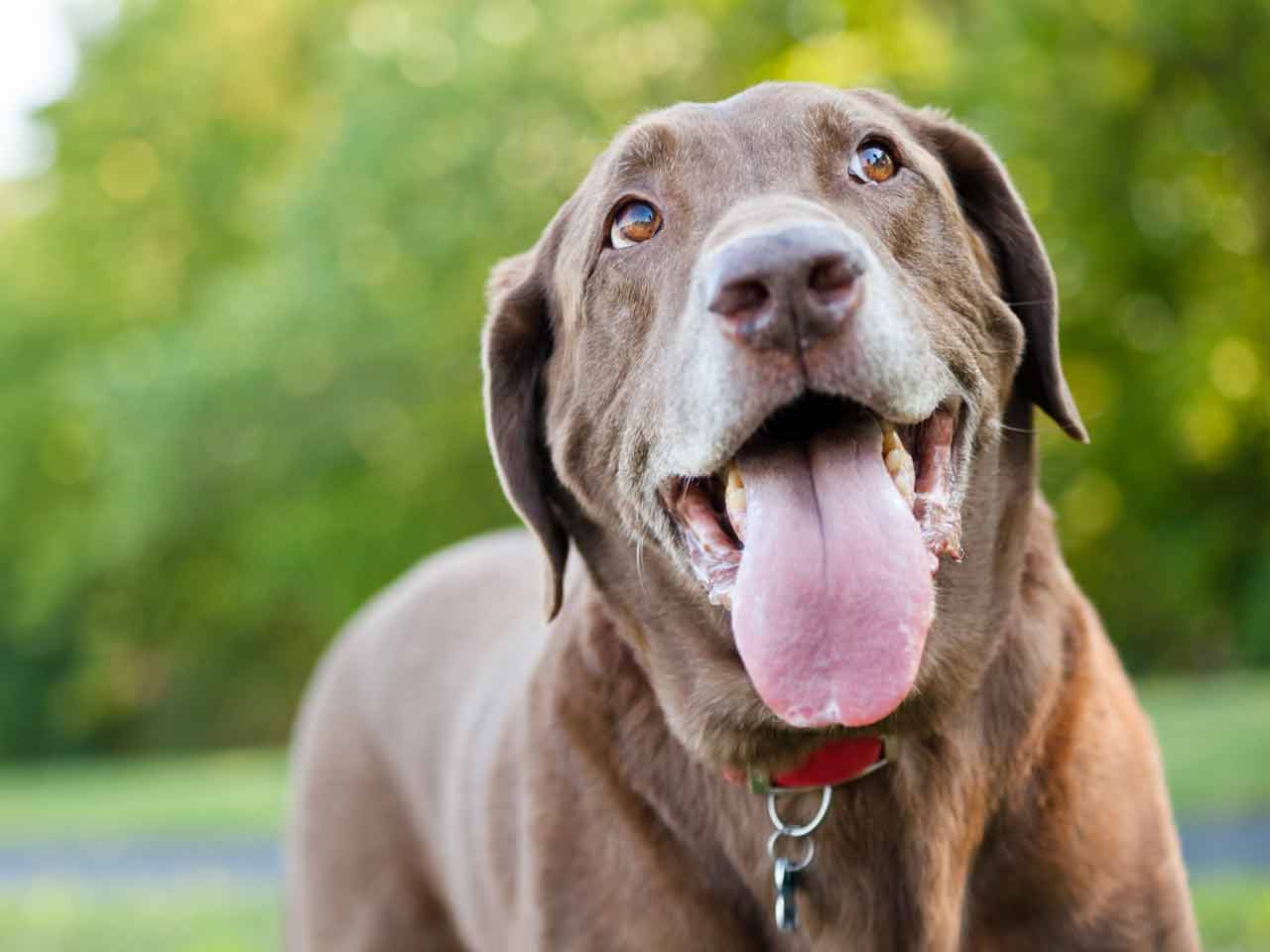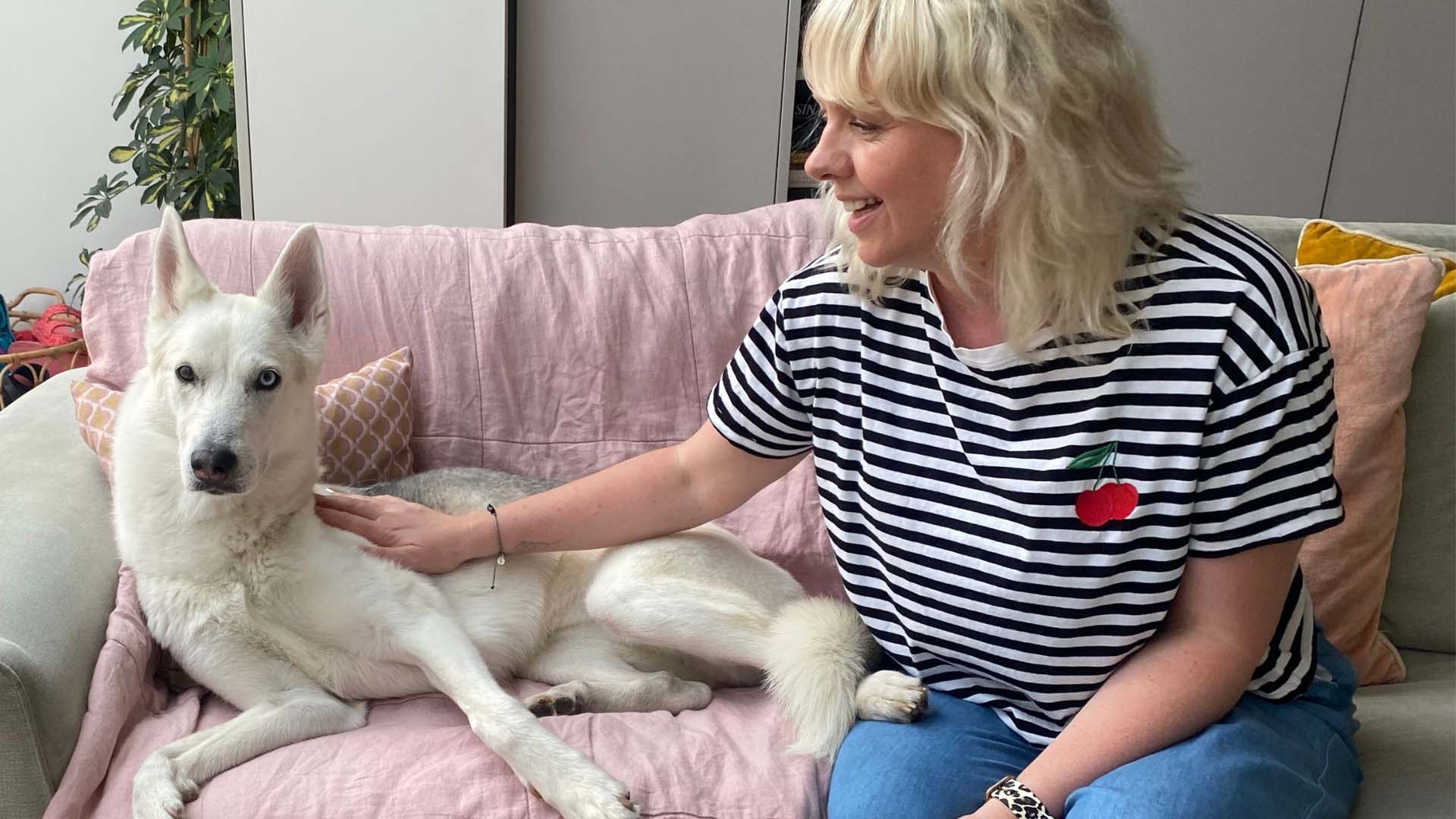In an age of rapid technological advancement, it’s not just humans who are benefitting from the latest innovations. Our furry friends, particularly dogs, are also reaping the rewards of modern technology.
From health monitoring to interactive playtime, a wide array of high-tech dog gadgets and devices have emerged to enhance the wellbeing and happiness of our four-legged friends.
While this all sounds fantastic, does doggy tech really enhance your pooch’s life or is it just a gimmick? And can it really add anything to their lives?
As a dog owner who is tech mad, I asked the experts and fellow dog owners for their opinions on whether they’re a good buy or just clever marketing.
Do dogs really need gadgets?
With around 28% of UK adults owning a dog – an estimated population of 10.6 million pet dogs – it’s no wonder companies are creating new dog tech.
The pet care market as a whole was estimated to be worth £1.92 billion in 2021 and further research by Mintel found that 51% of pet care buyers would rather cut back spending money on themselves than on their pets.
Companies are cashing in on the fact that tech-savvy dog owners want to be able to share advancements with their dogs but, as with any tech, most of it doesn’t come cheap. Is it really worth spending out on dog tech?
Applied animal behaviourist Renee Rhoades, who runs R+Dogs, says that while dogs don’t really need tech, some can actually be quite useful.
“I wouldn’t say that there are any particular gadgets that dogs need. However, there are some gadgets which can help to increase the safety of dogs,” she says.
“There are also some gadgets which can make pet guardianship easier, improving the lives of dogs.”

Image credit: Shutterstock/Esta Webster
The best bit of tech for any dog is a microchip, which can help reunite you if your pooch gets lost
She adds that the bit of tech essential for all dogs is a microchip, as this is the only piece of technology that can really help if your dog runs off or is stolen.
“Make sure that their microchip is up to date with your details,” advises Rhoades.
“While a tracker can be removed, it is much more challenging – if not almost impossible – to remove a microchip from your dog.”
Other than that, Rhoades says the two bits of dog tech she thinks are worth buying are GPS trackers and doggy monitors.
GPS trackers for dogs
The premise is simple when it comes to GPS trackers. You attach them to your dog and then you can keep an eye on their movements via an app.
“GPS trackers are great investments, especially if your dog is exercised off the lead,” explains Rhoades.
“We never know exactly what may come when we have our dogs off leash and so having a GPS tracker on them means that we have the best chance of getting them back if something were to happen, causing them to run off.”
The benefits of a GPS tracker
The obvious benefit is that you can keep an eye on your dog, even when they are out of sight. It’s particularly useful if, like me, you have a dog who has a strong prey instinct and takes off after every squirrel or bird.
Lisa Ventura MBE, founder of Cyber Security Unity, decided to buy a tracker when her rescue dog Poppy escaped from her house a week after she had brought her home.

Image credit: Lisa Ventura
Poppy was just 15 months old when she did a runner, making owner Lisa invest in a GPS tracker
“Since that heart-stopping day, and because Poppy being part-husky is prone to being a bit of an escape artist, we got a Tractive tracker for her that sits on her collar,” she says.
“We love this piece of doggy tech. When we’re out on walks, if anything happens and her collar fails or breaks, we know we have the tracker on her for that extra reassurance that we’ll be able to catch her. It also tracks our walks with her, so we can see our routes and how many steps Poppy does.”
The downsides of a GPS tracker
As with all modern technology, doggy GPS trackers need to be charged regularly. For pet-owner Jo Baker, it was a struggle to always remember to do this.

Image credit: Jo Baker
Once her dog Winston was trained, Jo found she didn’t really need a tracker
“I have used a Tractive tracker but found that I constantly forgot to charge it, which wasn’t helpful,” she says.
Baker also says that the monthly subscription expense became too much once her dog got older and better behaved.
She adds: “I only really needed it when we were in unfamiliar locations. Now he’s older, he rarely runs off, so I found the monthly payments a bit steep.”
If you do want a GPS tracker for your dog, but don’t want to keep paying out each month, PitPat’s trackers are a one-off cost of £159. They’re also supposedly waterproof and have a long range, plus they’re small enough to fit on collars and harnesses.
Apple tags don’t require a monthly subscription fee either and can also be attached to your dog’s collar via a silicon holder. However, Nicola Wordsworth, owner of Pup Suds, found they didn’t always work the best.

Image credit: Nicola Wordsworth
Nicola found that remote locations didn’t work so well with Apple tags
“I used an Apple AirTag on my dog Bertie when he was young and recall wasn’t perfect, but I didn’t use it for long due to its size,” she says.
“Also because if there weren’t Apple iPhones nearby (to help it position itself) it didn’t really work too well. They’re a good option if you’re in a more populated area, but not in more remote areas.”
Dog monitors
We’ve been monitoring sleeping babies for years via a camera and now people have caught onto the fact that monitors can also be useful for dogs.
“Dog cameras in the home are fantastic investments and can give guardians a piece of mind, especially when they are concerned about how or what their dogs are doing when they are not home,” says Rhoades.
“The same can be said for cameras outside of the home that can keep an eye on your dog when you’re not around.”
The benefits of a dog monitor
As well as being able to see what your pup is up to while you’re out, monitors can help anxious dogs.
Jo Sellers, a dog separation anxiety specialist from Pippin Pets Dog Training, ensures all her clients use a dog monitor during training.

Image credit: Jo Sellers
Dog trainer Jo, seen here with her dog Reba, believes a monitor can help with separation anxiety
“I’m a certified separation anxiety specialist and insist all my clients have a dog cam,” she says.
“This way, they can return to their dogs before they get anxious, so helping them overcome being scared home alone.
“Most dogs will show some anxiety signs before they bark or cry, so it is important to ensure the owner is back in the room before they build into a panic attack and a camera allows the owners to return at just the right point before their dog becomes anxious.”
For many of her clients, this begins with just approaching the door and building up to being out of sight. By slowly increasing their tolerance, Sellers believes most dogs have a strong chance of overcoming separation anxiety.
Jan Kiley, Chief Operating Officer at Dogs For Autism, has found it useful for ensuring her dog isn’t too noisy while she’s out.

Image credit: PipPat
As well as for her own dogs, Jo uses monitors to keep an eye on those dogs she trains for her charity, such as Luna
“I currently use Blink camera from Amazon to keep an eye on my youngest dog when I am out,” she says.
“She is a bit of a barker, so I can listen and watch and tell her to stop via the camera – she looks very confused as to where my voice is coming from!
“I think it’s a great training tool, as you can talk to your dog if needed and it’s also brilliant for peace of mind – or not! – if you’re out and want to see how settled the dogs are.”
You can even go one step further with the Furbo Pet Camera, which gives you barking alerts, has a 360° camera that tracks your dog’s movements and also allows you to dispense treats to your pooch.
My only concern with this? Dogs aren’t fools and I think many – read, my dog – would try to get the treats themselves from the camera and cause damage to it.
The downsides of a dog monitor
As I discovered using my Echo Show as a dog monitor, cameras in the house are only effective if your pooch is in view. Once they are out of sight, you have no idea what they’re up to, so unless you have cameras across your house or shut your dog into one room, they’re not foolproof.
There’s also the fact that a monitor – especially if you talk to your dog via it – might make your pooch miss you more.
“Whether it makes the dog feel more settled, I guess it depends on the dog!” says Kiley. “For mine, I think she finds it reassuring to hear my voice; others might be more confused.”
Other tech recommendations
Trackers and cameras are only the tip of the dog tech iceberg. Much tech – such as toys that move around on their own – are gimmicky and, in my case, freaked out my dog so much she wouldn’t come inside. However, there are some gadgets for your dog that can also be useful.
Biscuit app

Image credit: Biscuit
Biscuit rewards you for walking your dog with vouchers that you can spend
More for owners than dogs, this app basically rewards you for walking your dog. The more you walk, the more biscuits you earn. These can then be exchanged for different rewards, from Amazon vouchers to money off Just Eat orders.
While it doesn’t make me walk my dog more, it does make the daily walks more fun – knowing I’ll have a reward at the end of them.
The only downside is that you have to remember to take your phone on your walk and also turn the tracker on. Other than that, as it’s free, it’s a fun app to use.
Activity monitor
If you’re more worried about your dog’s activity, you can try an activity monitor. Just like a fitness tracker for humans, doggy activity monitors look at how much exercise they are getting, how many calories they are consuming and can even make feeding recommendations.
Kiley, who uses them on her dogs, says it can be a useful tool if you have an overweight pooch.
“It’s really interesting to see how far an off-lead dog will go compared to the owner!’” she says. “If you are trying to get weight off a dog, it could help you see how much exercise your dog is getting.”
For Joe Nutkins, an accredited dog trainer and canine fitness trainer, an activity tracker helped her monitor her dog’s serious illness.

Image credit: Joe Nutkins
Dog trainer Joe Nutkins found the activity monitor useful for more than monitoring her dog’s exercise
“One of my previous Norwich terriers, Cassie, had epilepsy most of her life – she lived to 16½ years – so we got her an activity tracker, she says.
“It would track her movements and rest times, as well as alert me if there was unusual activity, such as seizures. While it wasn’t programmed specifically for epilepsy, over time I learnt what was normal for Cassie to recognise new activity. I could then log into our home cameras and check she was OK.”
LED collar
I don’t use this as much in the summer months, but it’s vital when the darker days come in. Basically, it’s a chargeable LED collar that just slips over my dog’s head and gives off a bright blue light (other colours are available).
Not only does it help make her visible to other people and traffic, but it also gives a nice glow so I can see where I’m walking on those dark evenings.
There are options to make it flash but I feel like she’s in a mobile disco, so we opt for the calmer option of having the light constantly on.
Training gadgets
I’m obsessed with Copper, the chatty lab on Instagram. Via pre-programmed buttons, his owner has taught him to talk – yes, really. He simply presses the buttons to tell her what he needs, which can be anything from a bath to the fact he’s feeling sad.
Buoyed up by this, I bought just two buttons for my dog Shyla and I’ve recorded my voice saying yes or no.
Recordable Training Buttons for Dogs, RRP £19.99
Check price
It’s early days for training, but she has pressed the yes button once to say she wants a snack. Whether that was accidental or not, I’m not sure – but she seems to enjoy our little training sessions.

Image credit: Saga Magazine
My dog Shyla is just learning to use the buttons – with varied success!
Whether you use technology or not, Rhoades believes stimulating your dog is essential for their wellbeing, especially when you leave them alone.
“Engaging your dog in mental and physical activity can help to fulfil their needs,” she says.
“That means when you are away, they can use this downtime to get good rest as the home is quiet and they will not be disturbed by you moving around.
“Engaging in activities such as letting your dog sniff as much as they want on a walk or a toy that dispenses food can help to engage their nose, activating their brain.”
Wellness tech
If your dog is prone to dodgy joints, Nutkins recommends the ThermaVet imaging device.
“It attaches to my phone to check the dogs if they appear to have discomfort or to check routinely for things I already know about,” she says. “This shows changes in heat signatures and has been useful to identify a spot that needed therapy.”
Nutkins then uses a Photizo device, which is essentially red-light therapy for dogs, as well as a Healed LED pad, which works in a similar way but for longer sessions. As a certified therapist in this area, she says it’s been useful for helping dogs with healing and pain relief, something her older dog, Merlin, has benefitted from.
She told us: “I use it in between his monthly acupuncture appointments to help his hips and rear legs, as well as with my disabled cockerel who has deformed feet. He’s gone form not walking at all, just rolling about, to being able to walk, run and climb!”














